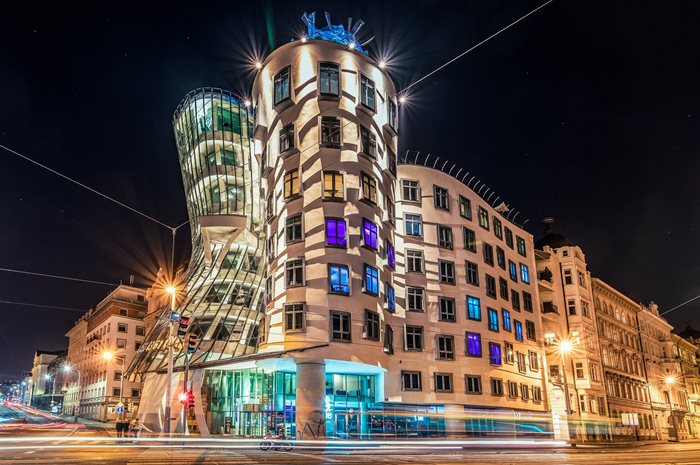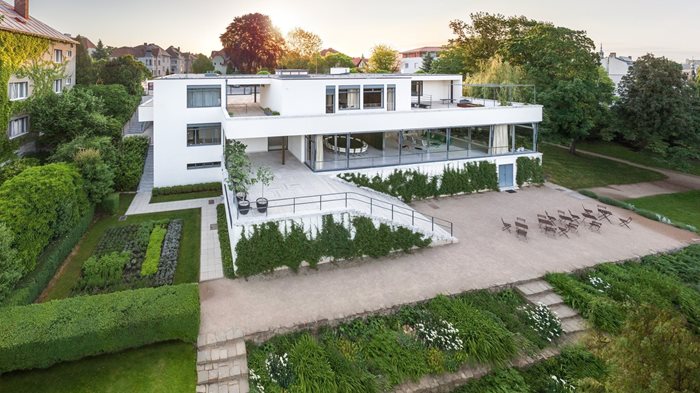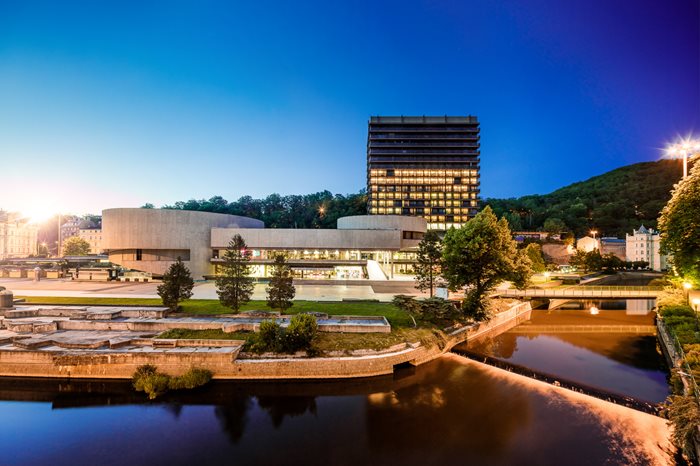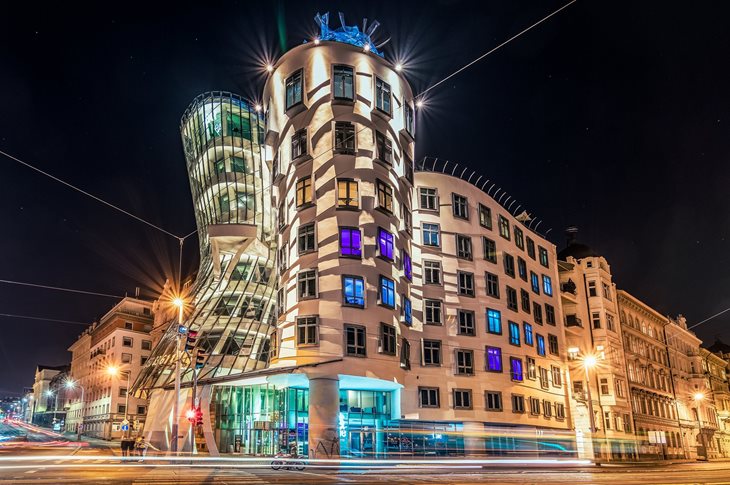Tjeckiens gyllene stad
Prag måste vara en drömplats för alla europeiska arkitektur- och historieentusiaster. I åratal har utländska turister strosat över stadens gotiska pärla Karlsbron, beundrat barockstilen i S:t Nikolaikyrkan och den romanska St. Georgskyrkan vid Pragborgen. Prag är späckad med arkitektoniska och historiska sevärdheter. Prags unika arkitektur gäller inte bara de tidigare århundradena, utan även 1900- och 2000-talen. Nutiden slutar inte i skuggan av de senaste århundradena. Prag vimlar av modern konst och arkitektur. Bland pärlorna i modern arkitektur från 1900-talet hör Danshuset på Rašínovo Nábřeži, som ligger några steg från ett av Prags berömda gallerier, Galleri Mánes. Huset ligger precis intill huset där Tjeckiens första president Václav Havel bodde. Det byggdes mellan åren 1992–96 och ritades av den slovenske arkitekten Vlado Milunic och den kanadensiske arkitekten Frank O. Gehry.

Ovanliga rundturer med arkitektoniska landmärken
Historiska slott och herrgårdar är ofta ett vanligt stopp under en semester i Tjeckien. Du kanske redan besökt många sådana platser? I så fall är det dags att upptäcka arkitektur i andra sammanhang! Besök Plzeň i västra Böhmen och lär dig mer om designern och arkitekten Adolf Loos som var en av de första med att skapa det samtida konceptet med bostadsdesign och arkitektur i början av 1900-talet. Vissa unika lägenhetsinteriörer i Plzeň har bevarats och de är öppna för allmänheten. Rundvandringarna i funktionalistiska Villa Tugendhat i Brno hjälper också till att förstå arkitektoniska principer. Dess arkitekt, Ludwig Mies van der Rohe, anses vara grundaren av modern arkitektur. Villan som han byggde med en obegränsad budget på 1930-talet är förkrigstidens förhoppning om en bättre värld.

Kommunismens arkitektoniska lämningar
Är brutalismens arkitektur vacker eller trist? Brutalismen är en förgrening av den modernistiska arkitekturen från mitten av 1900-talet som bygger på en massiv, klossliknande estetik. Byggnaderna framstår som klumpiga och beskrivs ofta som ett uttryck för dåtidens dåliga smak. Brutalismens byggnader ser inte speciellt charmiga ut, men byggnaderna blir ändå mer och mer populära med tiden och eftersöks av allt fler besökare. Tjeckiens era av brutalism är nära kopplad till landets kommunistiska era. Byggnaderna syns överallt i Tjeckien, och en av dessa, nyrestaurerade hotell Thermal finns bland annat i kurorten Karlovy Vary och utgör varje år bakgrunden till stadens världsberömda filmfestival.

Modern arkitektur för framtiden
Låt oss avslöja att Ostrava kommer att få en skyskrapa. Det kommer bli den högsta skyskrapan i Tjeckien med sina 235 meter över hjärtat av Ostravas centrum. Konstruktionen förväntas vara färdig 2027. Under de senaste tre decennierna har Ostrava övergått från en kolgruvestad till en informationsteknologisk industristad. Utveckling har gått från industriområden till kultur- och bostadshus, och inkluderar även en ny konsertsal av arkitektfirman Steven Holl, tillsammans med museer, universitetsområden, gallerier och bostäder. Den ikoniska 56 våningar höga skyskrapan är designad av CHYBIK + KRISTOF och består av en komplex uppsättning alternerande väggar och fasad i glas, vilket stödjer mångsidiga funktioner och möjliggör bostädernas fantastiska vyer över staden och det omgivande landskapet. Byggnaden kommer även att inkludera kontor, ett kongresscenter, butiker och ett hotell. Panoramataket kommer att ha ett café, restaurang och bar som är öppna för allmänheten.




.jpg?width=729&height=485)


